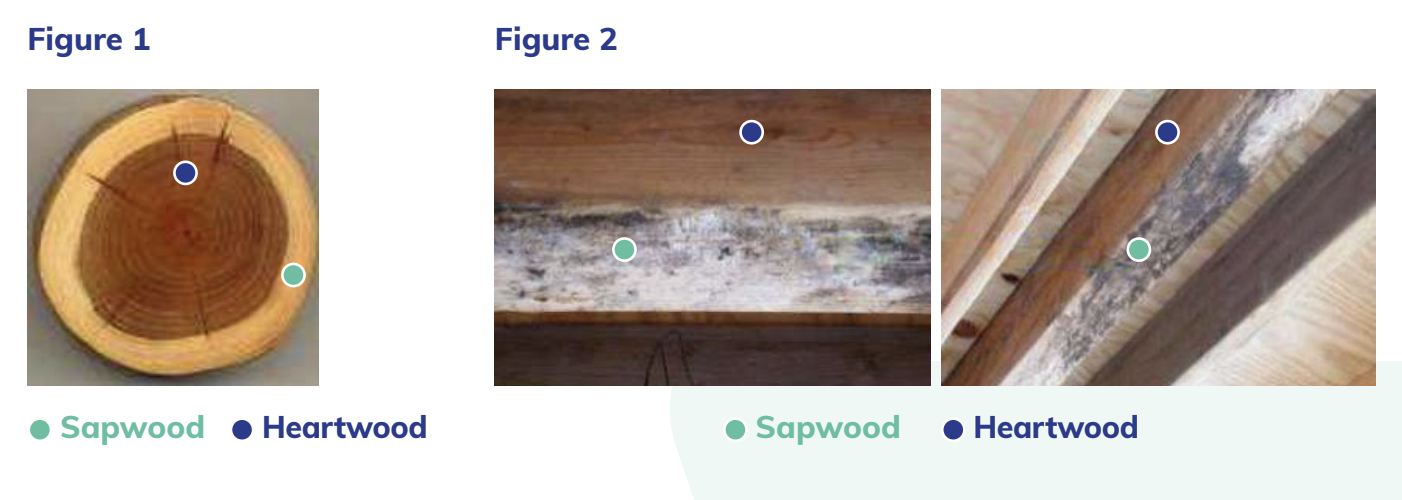What Is Lumberyard Mold?

What Is Lumberyard Mold?


Meet Ed
Instructor Ed Jones has over 30 years of experience in theindustry, has the title of MasterWater Restorer, is an Institute ofInspection Cleaning andRestoration Certification (IICRC)-approved instructor, and hasserved on the S500-2021consensus body committee todevelop the most recent standard.
Lumber and other wood building materials that sit outside in big stacks at lumberyards and on
construction sites provide a good potential food source for mold. Lumberyard mold is a term
that is generally used to encompass a wide variety of mold species that can be visible on new
wood and wood products by being becoming wet during the storage or building process. Lumber
is made of two types of wood: sapwood and heartwood. Sapwood refers to the area of the
wood that is near the bark of a tree, and heartwood is near the center of the tree. See photos
below from the University of Wisconsin.

The heartwood is more resistant to decay and mold due to deposits of chemical substances
that are genetically engineered. Heartwood is much darker than sapwood, as seen in figure 1.
Framing lumber and other wood construction materials are generally made out of sapwood. It
is mainly the sapwood that is susceptible to lumberyard mold and secondary growth of fungi.
See figure 2 above.
Of course, the wood needs to be >17% moisture content for surface mold to occur and as the
wood is rained on and dries on its own the mold becomes active when wet and dormant when
below 17% MC. This surface mold occurring on sapwood when it is wet does not damage
the wood’s structural integrity and only stains it. Many times this “lumberyard stained” wood
is used in construction and does not pose a mold issue but can complicate preexisting mold
determination when the restorer is inspecting for mold during the initial job scope inspection of
a water loss.
So, the takeaway is just because we find something that looks like mold, doesn’t always
mean that mold was caused from this water loss event. Make sure the lead technician is
thorough in their inspection, provides us as many photos as possible of any “potential microbial
growth,” and estimates how much of it there is. Do they think it is preexisting, and is it currently
wet? If less than 10 square feet in the affected area, then typically it can just be sanded or wiped
off, without full-blown mold remediation, depending on client specific protocols.
If mold remediation is performed in an area where there is lumberyard mold stains, it may be
difficult to remove the dark stains after the surface mold removal. These stains may be unsightly,
but do not harm the integrity of the wood and are usually only a visual discoloration.



